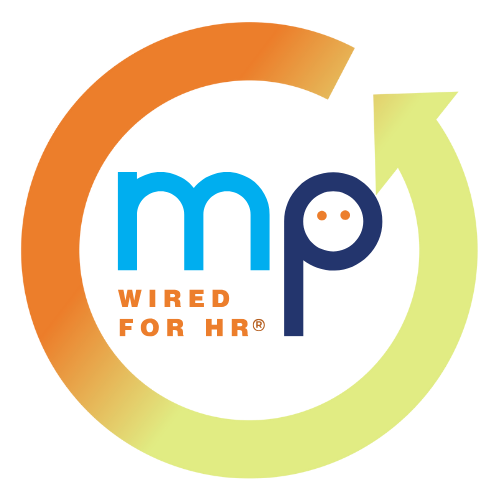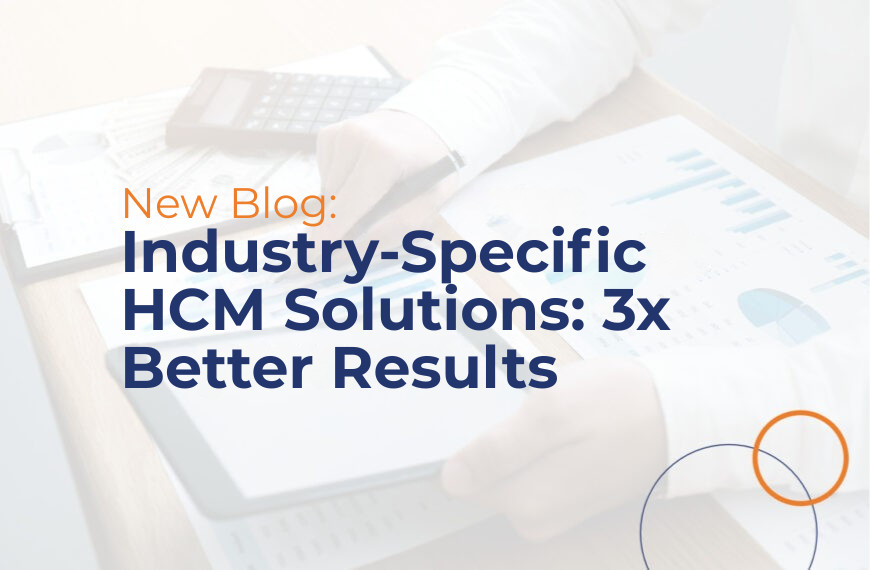Online Payroll is the foundational element of any successful business, let's explore how MP tailors its offerings to diverse employer types
Part 2: Speak Their Language — How to Win Buy-In From the C-Suite
November 4th 2025

Earning a seat at the table is one thing. Keeping it — and making your voice count — is another.
In Part 1 of this series, we explored how HR can stop playing defense and start positioning itself as a business driver. But even when you’ve earned credibility, there’s one skill that separates the good from the great: the ability to speak the language of the C-suite.
The truth is simple — executives care about business outcomes, not HR activities. If you want influence, you need to translate HR’s impact into their vocabulary: ROI, risk, and growth.

Step 1: Translate HR Metrics Into Business Terms
Executives aren’t interested in turnover percentages or engagement scores by themselves — they want to understand what those numbers mean for the business.
As Melissa Brown, MP’s People Relations Manager, explained in our recent webinar:
“Instead of saying, ‘turnover is 20%,’ say, ‘we’re losing $1.2 million annually in replacement and training costs.’ That gets attention.”
This is where HR leaders often miss the mark. The data is there — but the message doesn’t land because it’s not framed in the right context.
Try this approach:
- Cost: What’s the financial impact or potential savings?
- Risk: What happens if we don’t act?
- Benefit: What’s the tangible payoff for the business?
When you present HR data through this lens, you instantly speak the language your CEO, CFO, and COO understand.
Step 2: Lead With Data, Close With Stories
Data gets you in the door. Stories make your message stick.
Melissa shared this best practice during the session:
For example:
- Data: “Turnover has increased by 15%, costing $800K in lost productivity.”
- Story: “In the past three months, our customer support team has been short-staffed, and client satisfaction has dropped 14%.”
Together, the numbers and narrative turn your report into a case for action.
Step 3: Always Bring Solutions, Not Just Problems
Executives don’t want to hear what’s broken — they want to hear how you’ll fix it.
“When you meet with leaders, come to the table with solutions, not just problems,” Melissa advised. “Have three buckets ready: cost, risk, and benefit. That’s how you build credibility and influence.”
If you highlight a challenge, always follow it with an actionable, ROI-driven recommendation.
Example:
- Problem: “Turnover in one department is 20% higher than average.”
- Data: “Exit interviews cite workload and lack of development.”
- Solution: “Pilot workload redistribution and targeted training.”
- Impact: “Projected to reduce turnover by 10%, saving $200,000 annually.”
That’s how you turn a discussion into a decision.
Step 4: Understand Timing — Influence When It Matters Most
Even the best message falls flat if delivered at the wrong time.
“Timing is everything,” Melissa shared. “Leaders are most open to HR influence during inflection points — scaling, cost-cutting, culture challenges, or regulatory changes. That’s when HR becomes business-critical.”
To get buy-in, insert yourself into the conversation when strategy and people intersect — not after decisions are already made.
Action Step: Pay attention to leadership priorities. Read quarterly reports, attend operational meetings, and identify the moments when HR’s insight can prevent risk or accelerate growth.
Step 5: Build Relationships That Open Doors
Data and strategy matter — but relationships drive influence.
Executives trust voices they know and respect. That trust isn’t built in meetings; it’s built in consistent, value-driven interactions over time.
Melissa emphasized the importance of visibility:
“Spend time understanding what keeps leaders up at night. Be visible outside of HR—join operational meetings, walk the floor, understand the business inside out.”
The more you engage with leadership in their world — not just yours — the easier it becomes to frame HR’s work as essential to business success.
Step 6: Elevate Your Executive Presence
Influence doesn’t come just from what you say — it’s how you say it.
Melissa offered one final piece of advice:
“Confidence and executive presence matter as much as content. Sometimes three sharp data points and one compelling story are more effective than a 15-slide deck.”
Be concise. Speak the business language. Balance facts with conviction. That’s what makes HR voices memorable and credible in executive conversations.
The Bottom Line
Winning buy-in from the C-suite isn’t about speaking louder — it’s about speaking smarter.
When HR professionals translate data into business outcomes, frame every recommendation in terms of cost, risk, and benefit, and bring proactive solutions to the table, they stop being seen as administrators and start being viewed as strategic partners.
And as Melissa concluded in the webinar:
“When HR shows up with credibility, business acumen, and confidence, you don’t have to ask for influence — it follows naturally.”
About MP
At MP, we don’t replace HR — we empower it. Our HR experts and consultants help leaders align people strategy with business results through compliance clarity, data-driven insights, and isolved HCM technology.
Ready to elevate your HR strategy?
Download The Strategic HR Playbook — your roadmap to earning a seat at the table and making it count.

Make sure to subscribe to MP’s blog and stay on top of the most up-to-date news and trends in the business realm.
Stay Up-To-Date on Compliance & Trends
powered by Advanced iFrame
Recent Posts
- Part 2: Speak Their Language — How to Win Buy-In From the C-Suite
- Part 1: Stop Playing Defense — How to Position HR as a Business Driver
- Built for Your Industry: Why Industry-Specific HCM Solutions Deliver 3x Better Results
- Fortune 500 Power + Personal Touch: How Smart Companies Get Advanced HCM Technology Without Losing Human Connection
- Part 3: Leave Laws & Benefits — What’s Changing Under the BIG Beautiful Bill
Categories
- ACA (10)
- AI (6)
- BizFeed (6)
- Business Strategy (120)
- COBRA (5)
- Compliance (244)
- COVID-19 (92)
- Diversity (12)
- eBooks (19)
- Employee Engagement (33)
- Employee Handbooks (24)
- ERTC (29)
- FFCRA (7)
- HR (310)
- MP Insider (13)
- Payroll (166)
- PFML (9)
- PPP (24)
- PTO (5)
- Recruiting (54)
- Remote Work (39)
- Return to Work (32)
- Unemployment (1)
- Wellness (22)
Archives
- November 2025
- October 2025
- September 2025
- August 2025
- July 2025
- June 2025
- May 2025
- April 2025
- March 2025
- February 2025
- January 2025
- December 2024
- November 2024
- October 2024
- September 2024
- August 2024
- July 2024
- June 2024
- May 2024
- April 2024
- March 2024
- February 2024
- January 2024
- December 2023
- November 2023
- October 2023
- July 2023
- June 2023
- May 2023
- April 2023
- March 2023
- January 2023
- December 2022
- October 2022
- September 2022
- August 2022
- July 2022
- June 2022
- May 2022
- April 2022
- March 2022
- February 2022
- January 2022
- December 2021
- November 2021
- October 2021
- September 2021
- August 2021
- July 2021
- June 2021
- May 2021
- April 2021
- March 2021
- February 2021
- January 2021
- December 2020
- November 2020
- October 2020
- September 2020
- August 2020
- July 2020
- June 2020
- May 2020
- April 2020
- March 2020










